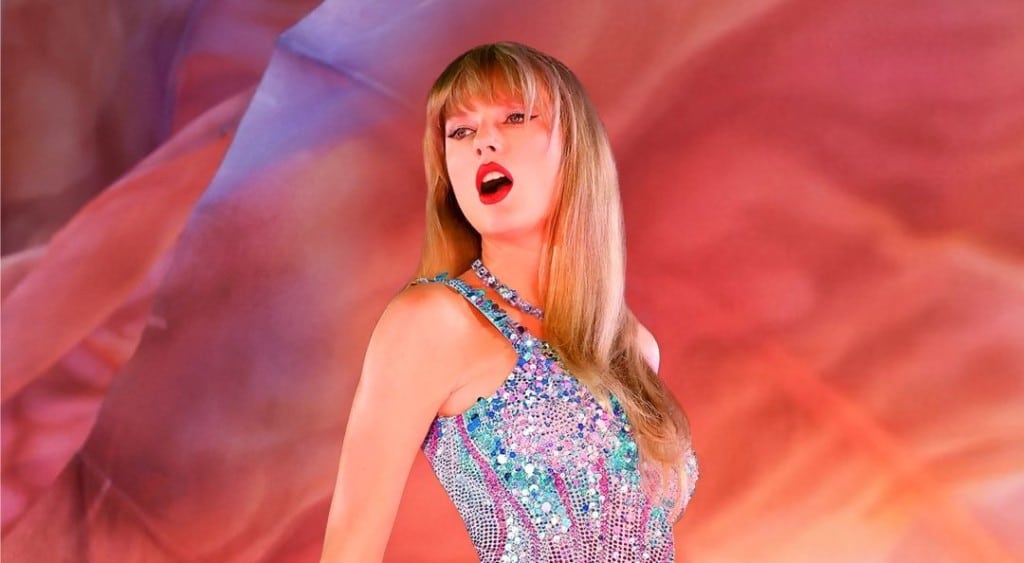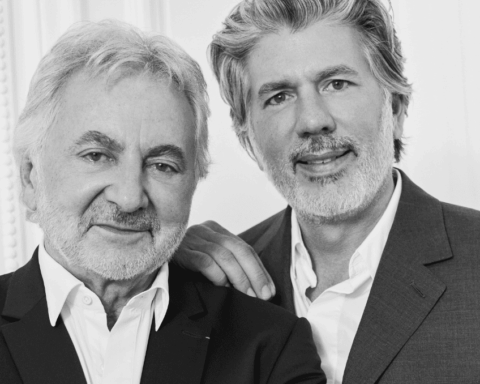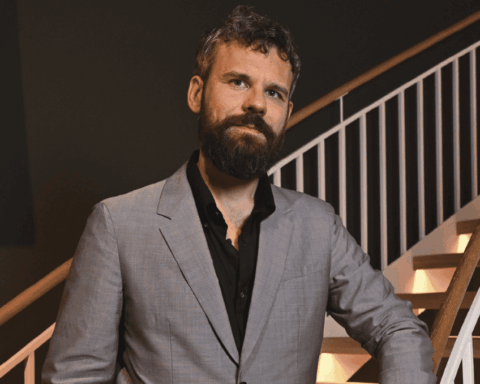In her 17-year career, Taylor Swift has become much more than a pop sensation: she has become the omnichannel artist par excellence. A model of female emancipation and an accomplished businesswoman, she has forged a special emotional relationship with her fans. Her latest world tour – The Eras Tour – which is playing to sold-out houses, is generating record financial spin-offs in the cities, regions and countries visited by her 146 shows! Here’s a look at a positivity shoot that has become one of the world’s most lucrative entertainment empires.
With her sixth world tour, bringing in the equivalent of the GDP of 42 countries, Taylor Swift has officially entered the exclusive club of female billionaires.
She recorded her first album at the age of 16, scored hit after hit, won 12 Grammy Awards, built up a fan base on a par with K-pop starlets, defied the music industry and the Trump administration: Taylor Swift is admired everywhere she goes.
Behind her success lies a genuine passion for music, eager to share her heartaches, her limits, her battles, her ghosts and her luminescent phases with her fans, the aptly named Swifties. There’s also a determination to sing and protect her rights against an often lawless industry. Only the Southern accent of her early days on the country scene would have been overplayed to launch her career.
A cash machine
With The Eras Tour, Taylor Swift broke all sales records for an international tour. Only Elton John stands in her way, but for how much longer? According to the Washington Post, the tour, which commemorates her entire career, is set to earn her $4.1 billion.
And according to the sharing rules granted to American artists, Taylor Swift should personally receive 85% of this revenue.
But Taylor Swift isn’t just about concert tickets. She also generates huge economic spin-offs at the venues where she tours. Forbes reports that each of the megastar’s shows generates between $10 and $13 million in overnight stays.
And it doesn’t stop there, as Taylor Swift also has a national impact, injecting $5.4 billion into the US economy this year. This figure includes the $1,300 to $1,500 her fans spend on merchandising, meals and travel every weekend.
The megastar is so popular that tickets for his concerts sell out fast. To satisfy the frustration of thousands of fans, a recording of one of these concerts – even though the tour is not yet over – is being shown in 8,500 cinemas in some 100 countries. According to Variety, the initiative has paid off, with over $100 million in pre-sales worldwide. As of November 3, The Eras Tour movie had grossed $150 million in the US alone, and over $200 million internationally.
But the artist is also known for her charitable commitments.
She has pledged to make donations in every city on her tour, as when she offered food to 125,000 people.
Taylor Swift also offered a $100,000 bonus to her tour crew, including her drivers.
A true passion for music
But Taylor Swift’s success is due first and foremost to her mezzo soprano voice and the personal story she tells in her songs, that of a genuine little girl from the American countryside, dreaming of one day making a living from her music.
Her career path bears a striking resemblance to that of “the preacher’s daughter”, Katy Perry, in the sense that the Catholic religion played a prominent role in launching their careers. Except that, unlike Perry, Taylor has never used it as a marketing tool.
Born in Reading, Pennsylvania, an hour’s drive from Philadelphia, Taylor Swift grew up in a loving, practicing Catholic family, with her father a financial advisor for Merrill Lynch and her mother a homemaker.
Spending most of her childhood on a Christmas tree farm, Taylor, who attended Sunday Mass, quickly discovered a passion for music and began singing in the church choir.
At the age of 9, she became interested in musicals and tried unsuccessfully to audition on Broadway. Eventually, she began singing country music at festivals, fairs, cafés, clubs, hospitals…in short, wherever she could. Mainly Dolly Parton and Dixie Chicks songs.
Without a record label, she managed to sing the American national anthem at a Philadelphia Sixers game in front of 20,000 people. But it was her encounter with a computer repairman that enabled her to start playing guitar and write her very first song, Lucky You.
Her parents teamed up with a New York manager, Dan Dmytrow, through whom she took part in Abercrombie & Fitch‘s Rising Stars campaign. This introduced her to several music labels.
To support her career in Nashville, her parents moved to Hendersonville, Tennessee, and her father left the Merrill Lynch bank. Taylor studied there and took guitar lessons at home. She makes her debut with RCA Records, taking part in songwriting sessions.
At the age of fifteen, she left RCA Records and her manager. It was during one of her performances at the Blue Bird Café in 2005 that Scott Borchetta, executive producer of Dreamworks Records, spotted her. She became the first artist on the independent label Big Machine Records, which he founded at the time.
In June 2006, she released her very first single, Tim McGraw, an ode to her high-school sweetheart, from whom she was forced to part by mutual agreement. It debuted on the US Billboard Hot 100 at #4 and #6 on the Hot Country Songs chart. Her first album was so successful that she became one of America’s favorite artists.
But it wasn’t long before the country chanteuse moved on to more pop and energetic sounds. With her second album – Fearless – written at the age of 18, she began to break through internationally, notably with her single Love Story (8.3 million copies). The single accumulated 11 non-consecutive weeks on the Billboard 200. Australia and the Philippines snapped up the album, which sold 3.2 million copies, making it the best-selling album of 2009.
Her third opus Speak Now (2010), seen by the artist as a “collection of confessions”, sold 1 million copies, while the lead single We Never Ever Getting Back Together sold 636,000 copies, both in its first week.
Red, the fourth (2014), sold 1.2 million copies on its release. It was with this album that she truly emancipated herself from the country sound of her beginnings to reach an even wider audience.
A choice that paid off, since the fifth album, 1989, released in 2022, marked the age of consecration, with the artist topping the sales charts in 78 countries! After a record number of pre-orders, 600,000 copies of this euphoric pop were snapped up in just 24 hours in the United States. 1.3 million copies followed.
In 2017 – a year after the election of Donald Trump, she released her most reactionary album to date, Reputation. She attacked the tabloids and critics for being “too” calculating/difficult.
Given her success, she decided to leave her original label and sign with Universal Music.
A battle for existence
We Are Never Ever Getting Back Together, I Knew You Were Trouble, Love Story, 22, Shake It Up, Blank Space…Taylor Swift has been churning out hit after hit since her debut.
In May 2019, the artist is on cloud nine. Invited to the Billboard Music Awards, she lives on stage like a Broadway-style fairy tale in a duet with Brendon Urie, leader of Panic! At The Disco on the track ME! from her new opus. With its colorful video tribute to Jacques Demy, the track climbed from No. 100 to No. 2 on the Billboard 100 chart in just one week!
Little did she know that a month later, in the midst of promoting her sixth album – Lover – the “worst-case scenario” for her was about to unfold: Scott Borchetta, her ex-manager, sold his label Big Machine Records, including its catalog, to Scooter Braun.
Taylor Swift then loses the rights to her first five albums, and is forbidden to sing any of the tracks from her previous opuses.
Distraught, the artist decided to share the news with her fans on Tumblr to tip the balance. Singer Kelly Clarkson suggested she re-record all her masters and offer new versions of her records, rich in bonuses and unreleased tracks. She follows the advice with good reason, as fans will snap up these reissued or limited-edition collector’s items.
At the 2019 American Music Awards, in novemeber, she dons a white shirt flocked with blood-red tracks from her five contested albums and performs a medley of her greatest hits, defying a ban from her former studio.
Audiences and fans applaud her audacity and determination.
In the midst of her confinement, she spoils her fans with two acoustic albums – Folklore and Evermore – with Bon Iver. The latter, a coming-of-age opus set against a backdrop of Gothic mythology, appears to be the star’s most autobiographical.
In 2021, in her battle to reclaim the rights to her old albums, she began re-recording them. In the space of a year, one single (Love Story) and two albums (Fearless and Red) received their own “Taylor’s Version”.
Since then, the artist has released her tenth studio album, Midnight (2022). The album and the Anti-Hero single became Spotify’s most listened-to single day, with 185 and 17.4 million streams respectively. With this opus, Taylor Swift becomes the first artist to occupy the entire Billboard Hot 100.
With Speak Now (Taylor’s Version), she releases her third re-recorded album in the summer of 2023.
At a time when the world is going badly and there’s no longer any reason to hope, Taylor Swift proves that it’s still possible to rally a mass audience around positive energy. It’s enough to cheer up the events industry, as well as record and cinema ticket sales. It’s only a short step from there to saying that it’s enchanting.
Read also > COWBOY CORE: THE FASHION TREND TAKES ON THE YOUNGER GENERATION
Featured Photo: The Eras Tour : The Film poster detail © Taylor Swift



















